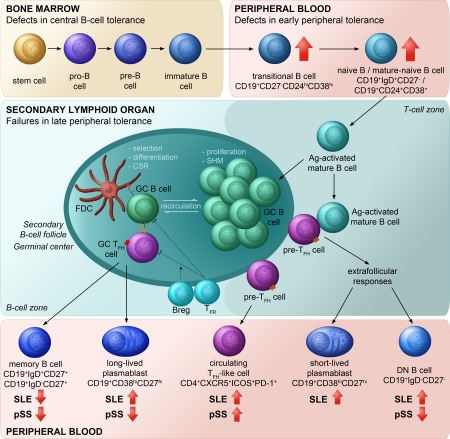Figure 6.

Summarized model showing the outcome of disturbed tolerance during B cell development in primary Sjögren's syndrome (pSS) and systemic lupus erythematosus (SLE). In physiological circumstances, to avoid autoreactivity, during B cell development multiple tolerance checkpoints are applied for the selection of autoreactive B cells 43. Abnormalities in checkpoint regulation, along with hyperactivation of Tfh cells and self‐reactive B cells contribute to the development of autoimmunity in susceptible individuals. Breaking of early B cell tolerance leads to consequential accumulation of transitional and naive B cells in the periphery. Perturbation of late peripheral tolerance in secondary lymphoid organs allows autoreactive mature B cells to undergo extrafollicular or germinal centre responses, which are supported by Tfh cells, and differentiate into memory B cells or plasmablasts 15, 44, 45. Derailed B cell homeostasis and increased Tfh cells responses manifest in characteristic changes in B cell distribution and accumulation of circulating Tfh‐like cells in pSS and SLE.
